Time and tide, it’s said, wait for no man – but a harbour navigable in all tides is what the people of Opotiki are desperately waiting for.
It’s more than 12 years since plans were launched to develop the town’s harbour into an all-tide port.

Sea shells Opotiki Mayor John Forbes has collected from local beaches give clues to what might be commercially harvested offshore, he believes.
Business case
“Treasury will provide support in the development of the business case, which is expected to be finalised before June 2015,” says John.
That’s a significant step forward for the project, which John and most of the district’s residents believe is crucial to its economic and social future.
Opening the harbour to coastal vessels will enable the mussels from Eastern Sea Farms to be managed and processed through the port, providing at least 300 new jobs for the community of 9000, in a district where between $15m and $23m is spent annually on social welfare.
“The waters of the marine farm are unique and of such high quality they are the equivalent of New Zealand’s best horticultural soils,” says John.
“It’s not just the quality of the water, but also the location of the farm and the nutrients in the waters.”
Wild resources
Twelve mussel lines are established on the farm but more will be installed.
“The potential is to grow more than mussels. It could farm oysters, scallops and other seafood.
“No accurate studies have been done on what wild resources we have off our our coast but I know from the shells, which wash up on our beaches, that our waters contain species which are highly expensive and much in demand in Asia,” says John.
“With the harbour development, and marine farming we may see other smaller industries established to sustainably harvest wild foods too.”
John says to understand why the harbour development and the marine farm are so important to Opotiki, it’s important to understand the district itself.
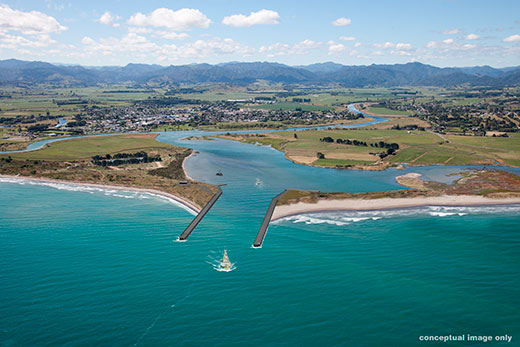
Opotiki’s new harbour entrance – shown in this concept drawing – will include two groynes at the mouth, which will make it navigable at all tides.
Oily rag
“This council operates on the smell of an oily rag. We have to. We cover a huge, sparsely populated region of 3000km2 of which 70 per cent is unrateable – because 50 per cent is Department of Conservation land, and 20 per cent for other reasons.
“From the rates from the remaining properties we fund a very large roading network, plus all the infrastructure and roles council are responsible for.”
The land is rugged, and only a narrow coastal strip is suitable for farming, forestry and horticulture so these are the current key economic drivers for the district.
There’s little employment and many of the district’s people have left for Australia and further afield, seeking jobs.
Between them aquaculture and the harbour development are predicted to create 318 to 450 full-time jobs and a reduction in social welfare spend in the district.
Building the harbour is expected to leverage a total investment package of $230m with a benefit to cost ratio of $7.30 for every $1 invested in the harbour.
It’s been predicted the revenue payback of the Government’s $25m investment via tax would happen in four to five years.
The mussel farm has the potential to lift national production of mussels by 20 per cent, and provide a much-needed source of spat for the industry.
Opotiki’s Mayor believes Opotiki is, as its council’s motto says, a “strong community – strong future”. But it’s in need of a cash injection to make that future a reality.

Last century the Opotiki Harbour was visited by vessels trading up and down the coast and was a place of busy commerce, as shown in this image from the Opotiki Museum’s collection.


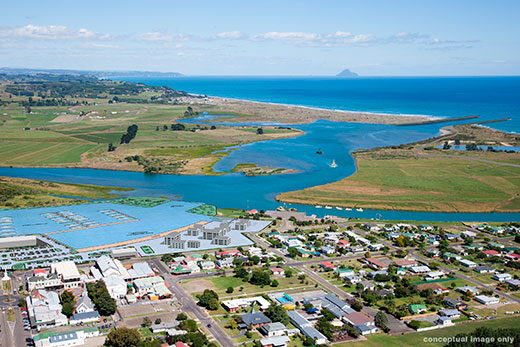
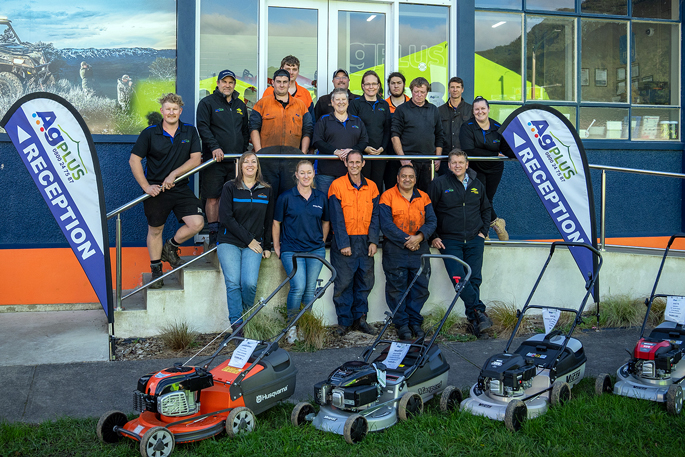
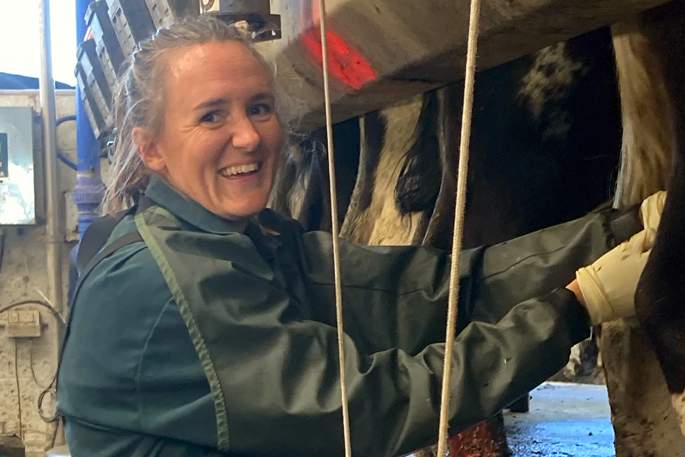
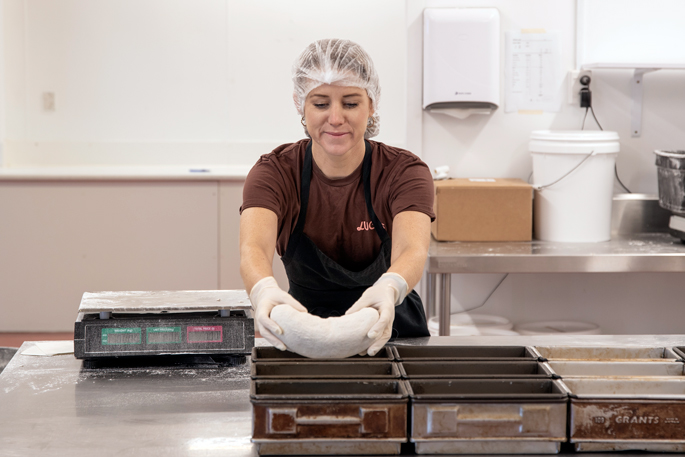

0 Comments
Leave a Comment